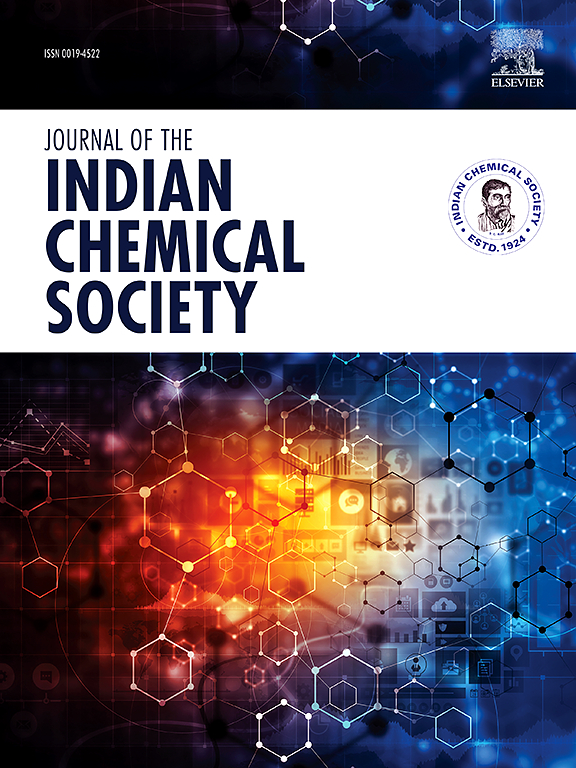松针和甘蔗渣生物炭对罗丹明B进行低浓度脱色的实验和人工神经网络建模
IF 3.2
4区 化学
Q2 CHEMISTRY, MULTIDISCIPLINARY
引用次数: 0
摘要
本实验研究着重研究了松针和甘蔗渣生物质原料通过快速热解转化为生物炭,用于修复低浓度罗丹明B (RhB)染料污染废水,并结合人工神经网络(ANN)建模。采用先进的表征技术对合成的生物炭的理化性质进行了分析。在1 mg L−1的吸附浓度下,松针生物炭(PNB)的最大吸附量(qm)为0.8370 mg/g,高于甘蔗甘蔗渣生物炭(SBB - qm: 0.5657 mg/g),表明其吸附位点利用率和表面功能增强。这两种生物质炭对RhB脱色现象的最佳解释是拟二级动力学和Langmuir等温模型,分别表示化学吸附和单层吸附。采用遗传算法优化的Levenberg Marquardt反向传播算法模拟的染料吸附过程与实验得到的RhB吸附容量值有很强的相关性。生物炭吸附剂吸附RhB具有较高的决定系数(R2- PNB: 0.987, SBB: 0.9953)和相关系数(R - PNB: 0.9764, SBB: 0.9899),均方误差(MSE- PNB: 0.0050, SBB: 0.0017),具有较好的多因素吸附预测能力。确定了两种生物质来源的生物炭吸收RhB的最佳参数为:温度(298.15 K)、生物炭剂量(0.02 g)、接触时间(360 min)、pH(2)、RhB初始浓度(1 mg L−1)。本文章由计算机程序翻译,如有差异,请以英文原文为准。
Experimental and artificial neural network modelling of Rhodamine B decolorization at low concentrations using pine needle and sugarcane bagasse biochars
The present experimental research investigation accentuates the thermochemical conversion of pine needle, and sugarcane bagasse biomass feedstocks into biochars via facile pyrolysis for the remediation of Rhodamine B (RhB) dye contaminated effluent at lower concentrations accompanied by Artificial Neural Network (ANN) Modelling. The physicochemical properties of the as-synthesized biochars were analyzed using advanced characterization techniques. At adsorbate concentrations of 1 mg L−1, pine needle biochar (PNB) demonstrated a higher maximum adsorption capacity (qm) of 0.8370 mg/g in contrast to sugarcane bagasse biochar (SBB - qm: 0.5657 mg/g), indicating enhanced adsorptive site availability and surface functionality. RhB decolorization phenomenon using both the biomass-derived biochars could be best explicated by the Pseudo second-order kinetics, and Langmuir isotherm model, signifying chemisorption, and mono-layered adsorption respectively. The dye adsorption process modelled using the Levenberg Marquardt backpropagation Algorithm optimized via Genetic Algorithm demonstrated a strong correlation with the experimentally obtained RhB adsorption capacity values. Higher coefficient of determination (R2- PNB: 0.987, SBB: 0.9953), and correlation coefficient (R– PNB: 0.9764, SBB: 0.9899) values, along with lower mean square error (MSE- PNB: 0.0050, SBB: 0.0017) values were obtained towards RhB uptake using the biochar adsorbents, signifying favorable predictiveness towards multi-factor adsorption. The optimal parameters for RhB uptake using both the biomass-derived biochars were ascertained to be: temperature (298.15 K), biochar dose (0.02 g), contact time (360 min), pH (2), preliminary RhB concentration (1 mg L−1).
求助全文
通过发布文献求助,成功后即可免费获取论文全文。
去求助
来源期刊
CiteScore
3.50
自引率
7.70%
发文量
492
审稿时长
3-8 weeks
期刊介绍:
The Journal of the Indian Chemical Society publishes original, fundamental, theorical, experimental research work of highest quality in all areas of chemistry, biochemistry, medicinal chemistry, electrochemistry, agrochemistry, chemical engineering and technology, food chemistry, environmental chemistry, etc.

 求助内容:
求助内容: 应助结果提醒方式:
应助结果提醒方式:


